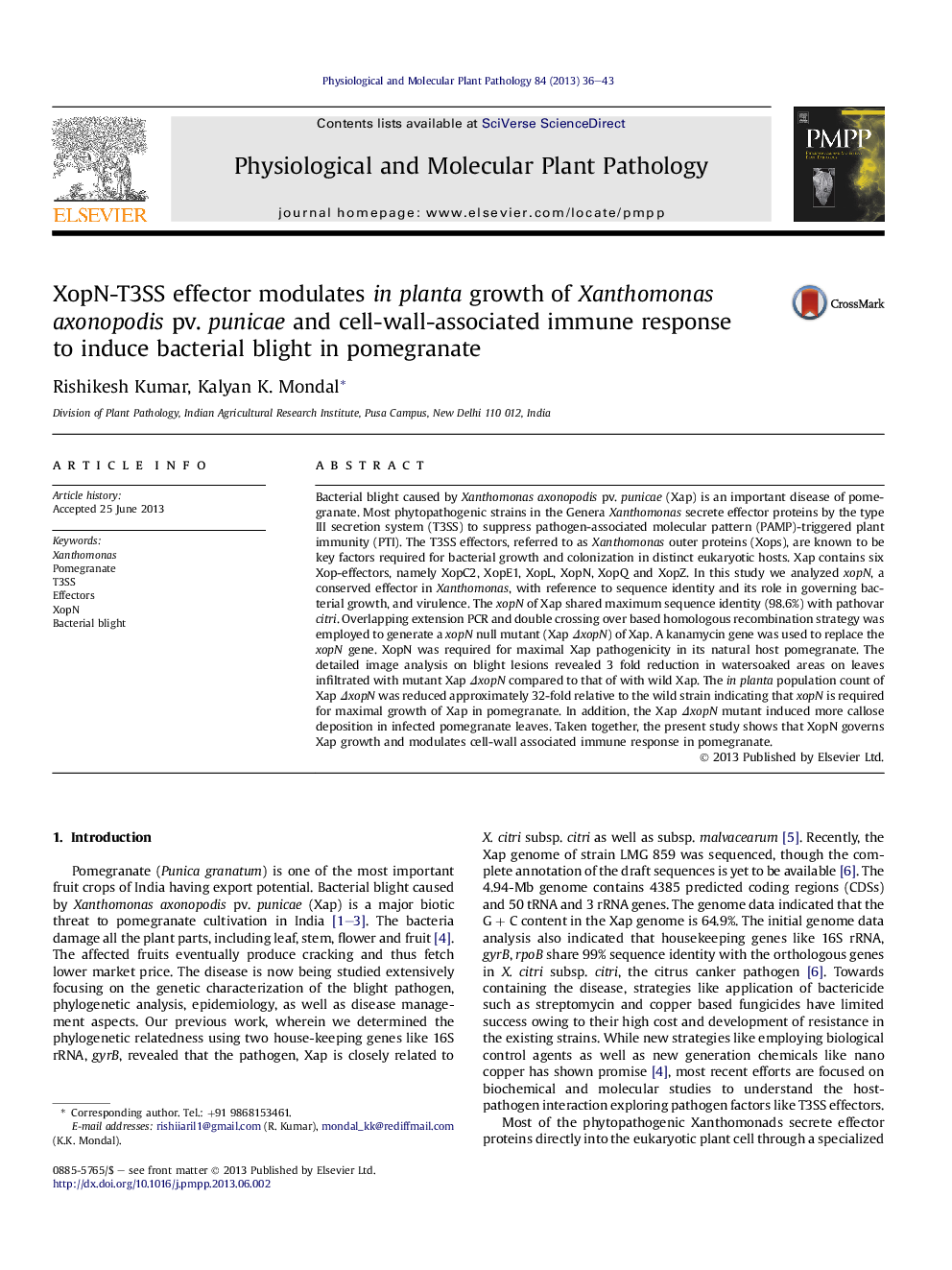| Article ID | Journal | Published Year | Pages | File Type |
|---|---|---|---|---|
| 2836383 | Physiological and Molecular Plant Pathology | 2013 | 8 Pages |
•Bacterial blight caused by Xanthomonas axonopodis pv. punicae (Xap) is a potential threat to pomegranate in India.•Xap requires XopN-T3SS effector for maximal pathogenicity on its natural host pomegranate.•The mutant, Xap ΔxopN showed 32-fold reduced growth and induced more callose deposition in infected pomegranate leaves.•We demonstrate the role of XopN in determining the bacterial growth and in the suppression of PTI response of pomegranate.
Bacterial blight caused by Xanthomonas axonopodis pv. punicae (Xap) is an important disease of pomegranate. Most phytopathogenic strains in the Genera Xanthomonas secrete effector proteins by the type III secretion system (T3SS) to suppress pathogen-associated molecular pattern (PAMP)-triggered plant immunity (PTI). The T3SS effectors, referred to as Xanthomonas outer proteins (Xops), are known to be key factors required for bacterial growth and colonization in distinct eukaryotic hosts. Xap contains six Xop-effectors, namely XopC2, XopE1, XopL, XopN, XopQ and XopZ. In this study we analyzed xopN, a conserved effector in Xanthomonas, with reference to sequence identity and its role in governing bacterial growth, and virulence. The xopN of Xap shared maximum sequence identity (98.6%) with pathovar citri. Overlapping extension PCR and double crossing over based homologous recombination strategy was employed to generate a xopN null mutant (Xap ΔxopN) of Xap. A kanamycin gene was used to replace the xopN gene. XopN was required for maximal Xap pathogenicity in its natural host pomegranate. The detailed image analysis on blight lesions revealed 3 fold reduction in watersoaked areas on leaves infiltrated with mutant Xap ΔxopN compared to that of with wild Xap. The in planta population count of Xap ΔxopN was reduced approximately 32-fold relative to the wild strain indicating that xopN is required for maximal growth of Xap in pomegranate. In addition, the Xap ΔxopN mutant induced more callose deposition in infected pomegranate leaves. Taken together, the present study shows that XopN governs Xap growth and modulates cell-wall associated immune response in pomegranate.
